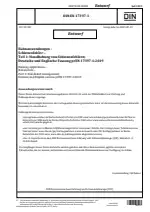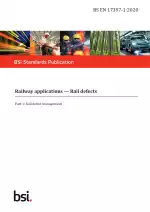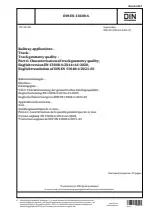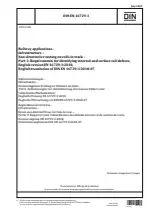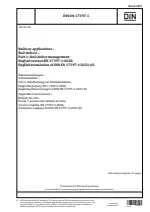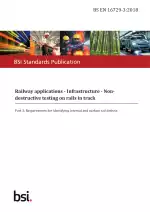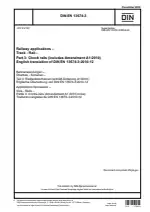Railway applications - Rail defects - Part 1: Rail defect management
Also Known As:
DIN EN 17397-1 is a standard titled "Railway applications - Rail defects - Part 1: Rail defect management." This standard is concerned with specifying the defect management system employed by infrastructure managers in order to minimize the chances of severe accidents resulting from degraded internal or surface defects on rails. It specifically applies to rails that conform to EN 13674-1, EN 13674-2, EN 13674-4, and EN 15689, excluding grooved rails as described in EN 14811.
The purpose of this standard is to establish a systematic approach to rail defect management within the railway industry. By implementing effective defect detection and monitoring strategies, the risk of accidents caused by rail defects can be reduced. Compliance with this standard ensures that infrastructure managers have appropriate systems in place to address rail defects and mitigate potential safety risks.
DIN EN 17397-1 outlines the requirements for managing rail defects and provides guidance on inspection, maintenance, and repair procedures. It emphasizes the importance of continuous monitoring and regular inspections to identify and address any defects in a timely manner.
| Descriptors | Classifications of defects, Damage, Defects, Definitions, Flaws, Handling, Infrastructure, Limits (mathematics), Maintenance, Management systems, Permanent ways, Rail safety, Rail transport, Rails, Railway applications, Railway installations, Railways, Risk, Risk assessment, Status, Surface discontinuities, Travel ways, Typus of error, Weldings, Pavements (roads), Sheets, Roadways, Superstructure |
| ICS Codes | 93.100 - Construction of railways |
| Language(s) | English + German |
| File Size | 98.9 MB |

